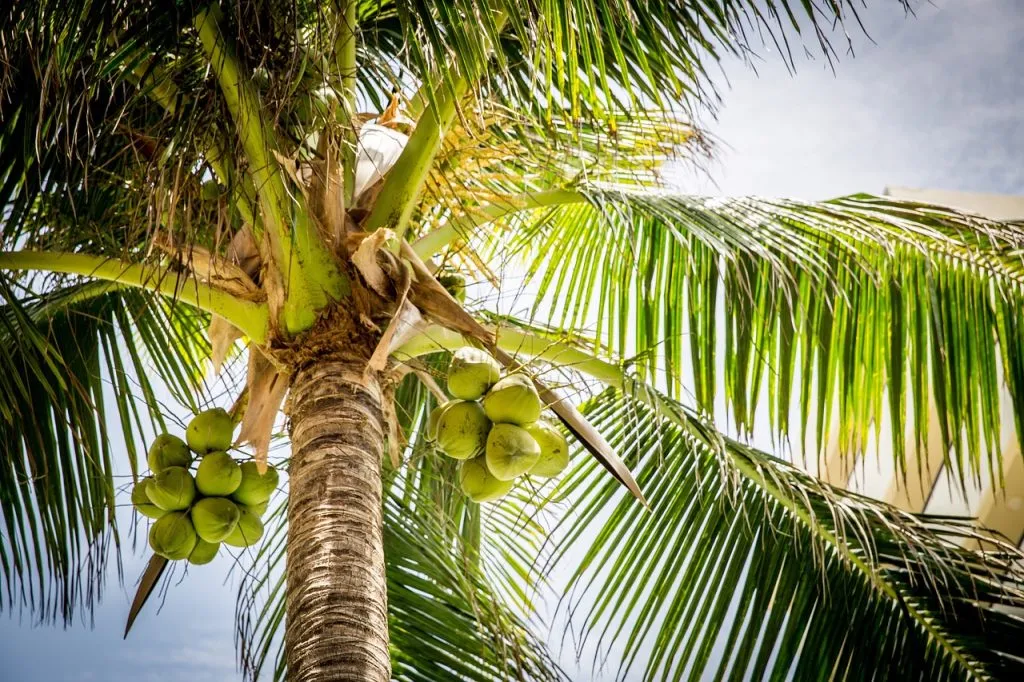The name ‘coconut’ can be somewhat misleading, prompting the inevitable question: are coconuts fruits or nuts? To answer this, we need to turn to botanical classifications.
Botanical Verdict: The Drupe Reality
Coconuts are not true nuts. Instead, they are classified as drupes. A drupe is a fruit with a hard stony covering enclosing the seed (like a peach or olive). Thus, from a botanical standpoint, a coconut is a fruit and more specifically, a drupe.
Why the Confusion?
The term “nut” in ‘coconut’ comes from the old English word ‘nut’, which means “any seed or fruit having a hard shell.” While this might make sense in everyday language, it’s not botanically accurate.
A Deeper Look at Coconut’s Parts
A coconut has three layers:
Exocarp: This is the coconut’s first line of defense against the outside world. In its early stages, the exocarp presents a smooth, vibrant green texture. This external layer, though often discarded during commercial processing, plays a crucial role in protecting the developing fruit.
Mesocarp: Beneath the exocarp lies a fibrous maze, often referred to as the coconut’s ‘husk’. This thick, fibrous matrix serves multiple purposes, from providing buoyancy—which aids in the coconut’s dispersal by water—to offering added protection to the inner seed. The fibers of the mesocarp, known as coir, are utilized in products like mats, ropes, and brushes.
Endocarp: As we delve deeper, we encounter the endocarp: a hard, woody layer that gives the coconut its familiar brown and rugged appearance when ripe. This shell not only encases the precious seed within but also acts as a barrier against pests and diseases.
Inside this protective trio of layers, the true treasure of the coconut awaits. The white, fleshy part, often mistaken as the ‘meat’ of the fruit, is technically the endosperm. This endosperm serves as the nutritional reservoir for the developing embryo, providing it with the necessary fats and proteins. When we savor coconut in our dishes or relish its oil, it’s this endosperm we’re enjoying.
The white edible part we associate with the coconut is the endosperm of the seed.
Conclusively, while the term “nut” is embedded in its name, a coconut is botanically a fruit and, more precisely, a drupe. Its multifaceted anatomy and wide range of uses, from culinary delights to artisan crafts, make it a fascinating subject of study.
To expand your knowledge on coconut’s identity and uses, you might want to understand What is the white part inside a coconut? Or, delve into the intriguing query: Do coconuts have seeds?

